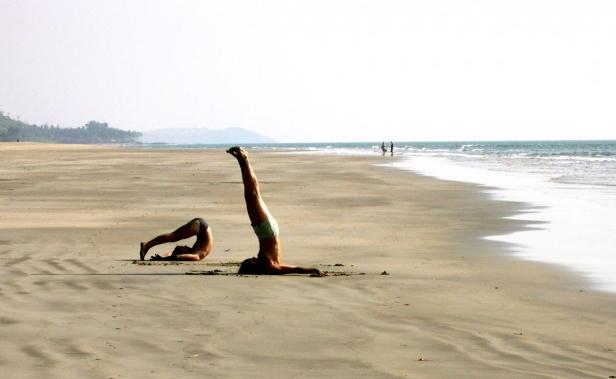[dropcap style=”font-size:100px; color:#992211;”]L[/dropcap]et’s hope this slightly counter-intuitive approach to managing social anxiety has some merit.
Because frankly, one of the reasons most of us do yoga, breathing exercises, muscle relaxation et al, is to get us away from the stinky evil humans.
New research out of Queen’s University has shed light on how exercise and relaxation activities like yoga can positively impact people with social anxiety disorders.
Adam Heenan, a Ph.D. candidate in the Clinical Psychology, has found that exercise and relaxation activities literally change the way people perceive the world, altering their perception so that they view the environment in a less threatening, less negative way. For people with mood and anxiety disorders, this is an important breakthrough.
For his research, Mr. Heenan used point-light displays, a depiction of a human that is comprised of a series of dots representing the major joints. Human point-light displays are depth-ambiguous and because of this, an observer looking at the display could see it as either facing towards them or facing away. Researchers have found people who are socially anxious perceive these figures as facing towards them (i.e., the more threatening way) more often.
“We wanted to examine whether people would perceive their environment as less threatening after engaging in physical exercise or after doing a relaxation technique that is similar to the breathing exercises in yoga (called progressive muscle relaxation),” Mr. Heenan explains. “We found that people who either walked or jogged on a treadmill for 10 minutes perceived these ambiguous figures as facing towards them (the observer) less often than those who simply stood on the treadmill. The same was true when people performed progressive muscle relaxation.”
This is important because anxious people display a bias to focus on more threatening things in their environment. In fact, some researchers think that this is how these disorders are perpetuated: People who are anxious focus on anxiety-inducing things and thus become more anxious, in a continuous cycle.
“This is a big development because it helps to explain why exercising and relaxation techniques have been successful in treating and mood and anxiety disorders in the past,” says Mr. Heenan, who worked with supervisor Nikolaus Troje (Psychology) on the research.
Source: Queen’s University
Photo: Kyle Lease

Some of the news that we find inspiring, diverting, wrong or so very right.



















